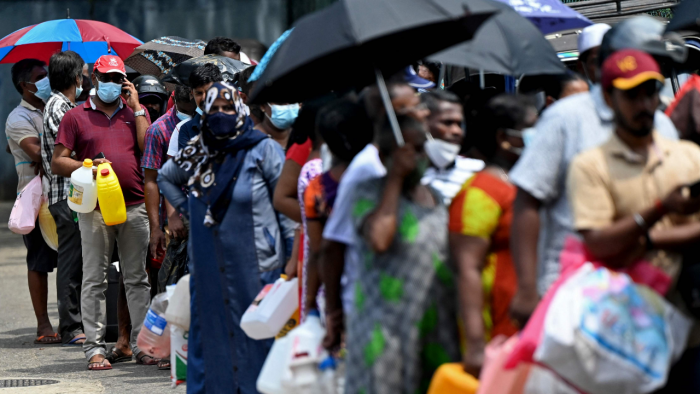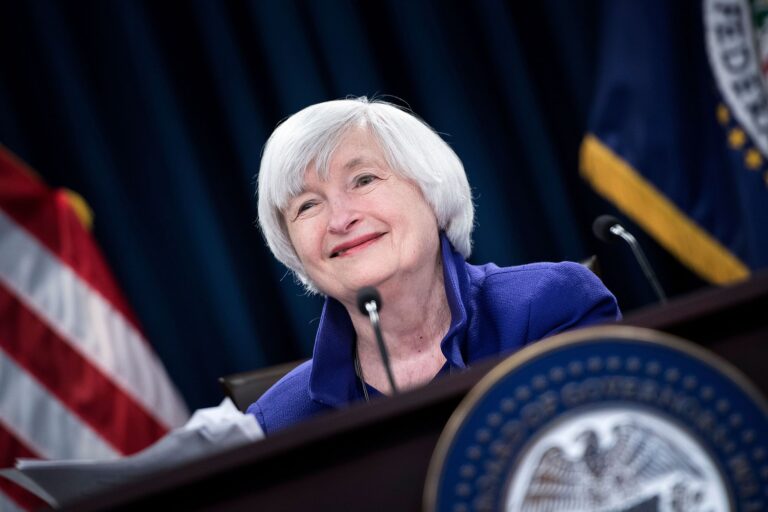An Economic Recovery Gone Wrong
At the start of the COVID-19 pandemic in late 2019, governments and policymakers faced a tough balancing act; maintaining economic activity and keeping the population safe. As a rational norm, protection of human life and public safety top most government policy papers. The economy became the opportunity cost to protect their populations from a raging, unpredictable pandemic.
Given the contagious nature of the virus, governments imposed lockdowns to limit movements and person-to-person interaction. In the absence of a vaccine, these measures proposed by health experts as the most effective to contain the spread of the virus.
While lockdowns managed to slow down the spread of the virus, they created another problem – one that could hang around our necks for some time. With limited economic activity going on, the economy ground to a halt. Governments worldwide were forced to dig deeper to feed a hungry and idle population and maintain the economy on the railroad.
Government Responses to Cushion the Economy
Governments and central banks’ responses to the pandemic brought the economy to its knees and pushed the world to the brink of a recession more cruel than the financial crisis of 2008. At the time, health and economic analysts predicted that the economy’s trajectory, depth, and duration would depend on several factors, including healthy public response, the behavior of the virus, and economic interventions.
To protect the economy from collapse, governments worldwide introduced sweeping and sizeable stimulus packages with a mix of monetary and fiscal policies to reduce strain on consumers and businesses, counteract disruptions caused by the pandemic, and keep economies afloat.
The U.S Economic Stimulus Package
At the beginning of 2020, Congress unleashed the most significant flood of federal money in the U.S economy in history. The government allocated $10 trillion in economic stimulus to support households and businesses.
To date, the Treasury has paid $5 trillion to households and businesses ranging from restaurants, mom-and-pop shops, schools, local governments, hospitals, airlines, and other institutions affected by the pandemic.
Of the total amount paid out already, $1.8 trillion went to individuals and households and was given out under the following categories;
- Stimulus checks – $817 billion
- Unemployment benefits – $678 billion
- Child tax credit expansion – $93 billion
- SNAP and other food assistance – $71 billion
- Delayed student loan payments – $39 billion
- Child care block grants – $28 billion
- Child care provider grants – $24 billion
- Retirement plan rules – $14 billion
Up to $1.7 trillion of the $5 trillion paid out went to over nine million small businesses with 500 employees and less through the Paycheck Protection Program. The program was introduced to help enterprises to maintain work on the payroll during a period of suppressed economic activity.
The Paycheck Protection Program offered a forgivable loan to businesses as long they kept workers on the payroll. These loans are justifiable because they could be turned into grants if a company meets all conditions. This amount was paid out under the following categories;
- Paycheck Protection Program – $835 billion
- Economic Injury Disaster Loan program – $349 billion
- Loosen limits on business losses – $193 billion
- Airlines – $80 billion
- Delay of the employer payroll tax – $85 billion
- Restaurants – $29 billion
- Economic Injury Disaster Loan advances – $27 billion
- Support for Federal Reserve loans – $25 billion
- Employee retention payroll tax credit – $26 billion
- Interest Deductions – $13 billion
- Paid leave credit – $11 billion
State and local aid received a total of $745 billion to cover unexpected shortfalls created by the pandemic, including lost revenue from museums and parking garages where business ground to zero. This money also went to upgrading infrastructure crucial to managing the virus, like sanitation facilities and sewer systems. This money was paid out under the following categories;
- American Rescue Plan direct aid – $244 billion
- Elementary and secondary education – $190 billion
- CARES Act direct aid – $149 billion
- Non-public schools – $6 billion
- Increases in the federal share of Medicaid payments – $72 billion
- Education grants and workforce – $5 billion
- Transit – $69 billion
- Transportation infrastructure – $10 billion
- Election security – $0.4 billion
The healthcare sector, being at the front center in managing the pandemic, was allocated $482 billion to bolster the COVID-19 management efforts, including testing, contact-tracing, treatment, sanitary facilities, and public education, among others. The amount was paid out in the form of;
- Grants to health providers – $156 billion.’
- Vaccines, treatments, and supplies – $64 billion
- Medicaid coverage – $56 billion
- Testing, monitoring, and research – $46 billion
- Medicare changes – $38 billion
- Vaccine and treatment development – $45 billion
- Health agencies – $12 billion
- COBRA coverage – $18 billion
- Expanded A.C.A. subsidies – $22 billion
- Waive certain cost-sharing – $13 billion
- Others – $11 billion
Another $288 billion went to other programs like Disaster spending ($78 billion), housing programs ($39 billion), Payments to farmers ($41 billion), Grants to colleges and universities ($59 billion), Other govt. agencies ($15 billion), Defense agencies ($13 billion), Transportation programs ($21 billion), and U.S.P.S. loan ($10 billion).
In addition to the U.S, China also introduced a stimulus package to minimize the economic meltdown from the pandemic, and so did other countries around the world. Many governments and central banks adopted monetary and fiscal policies, including increased government spending, interest cuts, and repo operations, among other strategies.
What were the Effects of the Stimulus Packages on Economic Recovery?
In addition to being the largest in recorded history, the U.S COVID-19 stimulus package was also one of the most generous fiscal responses to the pandemic compared to other countries worldwide.
The stimulus package no doubt offered many tangible economic benefits to many Americans, including reducing poverty and bridging inequality gaps beyond just helping people remain afloat during the pandemic.
Data from U.S. Census Bureau’s supplemental poverty measure shows that the stimulus packages moved 11.7 million people out of poverty in 2020, with poverty levels dropping from 11.8 to 9.1 percent.
Thanks to the government’s quick response through these stimulus payments, the economy managed to bounce back much faster than projected earlier, and its impact was significantly reduced. The U.S COVID-19 recession is the shortest on record, having lasted only two months.
The stimulus payments boosted businesses to prevent lay-offs and reduced consumer burden. This helped to maintain a reasonable level of economic activity and consumption to keep the economy on its wheels. The stimulus checks cushioned workers during one of the worst economic times in modern history.
Did the Stimulus Packages Overheat the Economy?
While the reasons for the current the current wave of inflation and the ensuing economic turmoil primarily come down to the disruptions caused by the pandemic, the stimulus checks, designed to keep American households afloat, played a role. However, the debate on how much these stimulus packages may have contributed to the current wave of inflation has divided policymakers, economists, and analysts.
The stimulus checks pumped free money into American pockets when economic activity and production were at rock bottom. This led to a consumption boom. The shelves soon became empty, with a lot of free money chasing a few goods. The situation was exacerbated by a chaotic global supply chain caused by lockdowns that saw many workers fail to return to work.
In early 2022, economists and analysts stared at an unusual scenario where workers resigned in masses, and unemployment benefit claims flattened when the economy was law. One of the advanced reasons is the free money pumped into the population, demotivating some workers from returning to work and prompting those nearing retirement age to opt for early retirement.
Russia’s invasion of Ukraine gave another blow to an already heated economy. Following the war, the U.S and European countries responded by placing an embargo on Russia, a move that cut off one of the largest oil supply arteries to the global market. The oil and natural gas supply disruption has led to shortages and soaring prices in many countries worldwide.
In addition to oil products, the war in Ukraine is also affecting the global food supply and causing prices of food commodities to go up. Before the war, Ukraine exported around 6 million tons of agricultural commodities to countries in Asia, the Middle East, and Africa. Ukraine can only export 15 to 20 percent of its pre-invasion export volumes as Russian ships, and sea mines block Black Sea ports, where much of Ukraine’s grain exports go through.
The absence of Ukrainian grains on the global market sends shock waves in the global food supply and threatens global food security.
It is true that the U.S stimulus may have been too powerful and pushed the economy to overheat against the backdrop of a high level of excess household savings, loose financial conditions, a growing budget deficit, and high growth forecasts.
Way Out
With the U.S mid-term elections closing in, the current run-away inflation is causing both economic and political jitters among economists, analysts, and policymakers in the Biden administration. While the economic reliefs managed to keep the economy on its feet and prevented a dreaded recession, economists and analysts agree that it has a fair share of the blame for the current wave of inflation.
Depending on the size, economic stimulus checks could flip the economy into a recession and wipe out any gains achieved in keeping the economy on the move and preventing mass employee sacking.
Many policymakers and economists acknowledge the policy mistakes in designing the stimulus packages. The war on inflation has involved rolling back some of the pandemic-era economic policies increasing interest rates, and reducing bond purchases.
Economists worldwide are scratching their heads about achieving a soft landing out of the current inflation and avoiding crushing the economy into a recession.
Final Word
The recovery from the economic fall-out caused by COVID-19 had taken a positive trajectory backed by stimulus packages that characterized the monetary and fiscal policies adopted by policymakers to ease suffering on citizens and businesses and save the economy from collapse.
While it’s no doubt these stimulus checks helped the economy remain on its feet, the design of these packages may have failed in size and timing. Although the trades of the COVID-19 stimulus were worth it, according to many economists, it may have serious political consequences and could reshape the trajectory of the current political winds.






